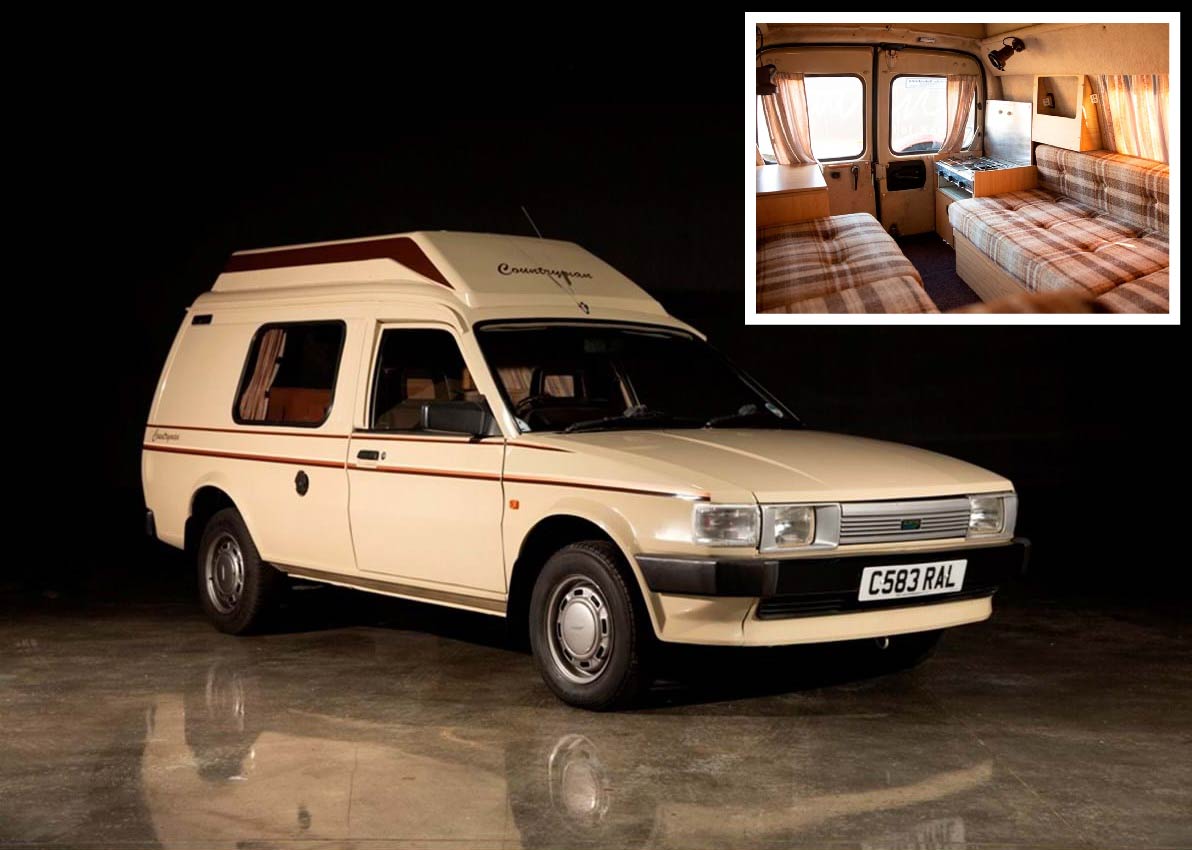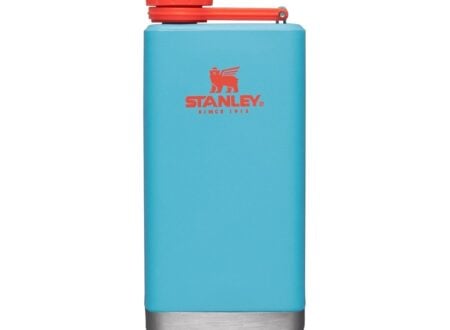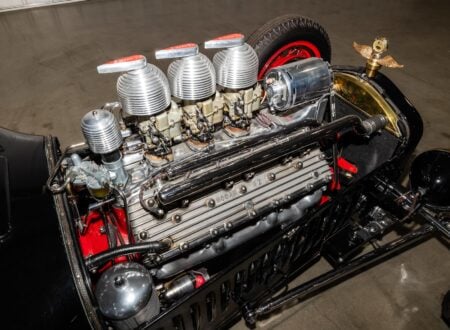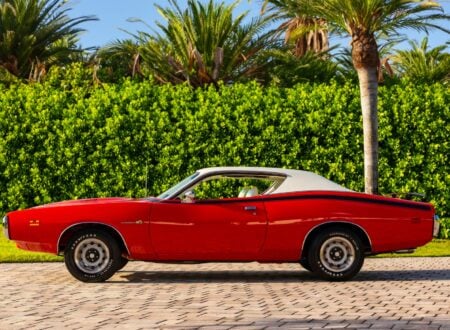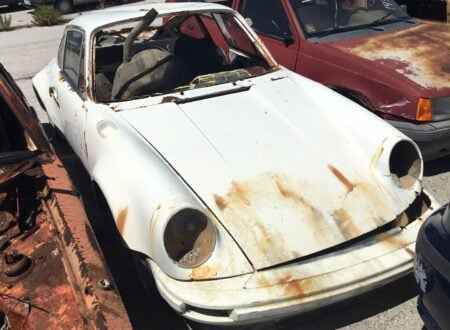This is a remarkably original Austin Maestro Countryman from 1986. It’s essentially a high-roofed version of the Maestro station wagon with a camper section in the rear that offers sleeping space for two.
With a price guide starting at just £5,000 (or $6,300 USD), this unusual ’80s era camper from England is in surprisingly good condition throughout considering its age. It would also make its new owner the instant top dog at any Radwood event.
The Austin Maestro Countryman
- The Austin Maestro was developed by British Leyland (BL), and it made its debut in 1983. It was a part of BL’s strategy to revitalize its product lineup in the face of stiff competition from European and Japanese automotive manufacturers.
- The Maestro was designed to replace the aging Austin Allegro, aiming to offer a more modern and competitive option in the compact car segment. Its development was marked by a focus on practicality and fuel efficiency, with a spacious interior and some modern amenities to differentiate it from the 1970s-era cars that had come before.
- One of the Maestro’s notable technical features was the use of a digital dashboard and “voice synthesis warning and information system” in the higher-specification models, such as the MG and Vanden Plas variants. This was futuristic for the time, perhaps an indication of British Leyland’s attempt to integrate more advanced technology into its vehicles and turn its reputation for making staid cars around.
- Initially, the Maestro enjoyed strong sales figures in the UK, benefitting from its position as a practical and affordable family car. However, over time, its popularity was hampered by build quality and reliability issues as well as ever-improving foreign competition.
- The vehicle you see in this article is an Austin Maestro Countryman. It’s the relatively rare camper van version of the Maestro that offered a higher roof and simple accommodations for two in the rear, with a small kitchenette and twin sofas that double as beds.
The Austin Maestro
Launched in 1983 under the umbrella of British Leyland, the Maestro was developed to be a vehicle that would forge a new direction for the beleaguered British automotive manufacturer. The aim was to combine practicality and affordability with modern technology and reliability, and hopefully shake off the woeful reputation that Austin had developed during the tumultuous decade of the 1970s.
Above Video: This is an original TV ad for the “Miracle” Maestro from 1983, early on in the model’s production run when sales were strong and the car looked like it might just save British Leyland.
The release of the Maestro marked British Leyland’s effort to innovate in the face of increasing competition from Japan and Europe. Designed to replace the outdated Austin Allegro, the Maestro was developed with a focus on efficiency, featuring a hatchback design that was both practical and more aerodynamically sound than a normal three-box sedan.
Its introduction was also marked by some notable technological advancements, including the implementation of digital dashboards and a “voice synthesis warning and information system” in higher-end models, genuinely cutting-edge features for the time.
The Maestro offered a variety of engine options, including the reliable A-Series and the more advanced S-Series engines. The performance highlight came with the introduction of the MG Maestro, which featured a 2.0 liter O-Series engine, offering significantly improved performance for those who could afford it.
The Maestro Turbo further raised the model’s performance, offering speed that rivaled the leading hatchbacks of the time coming out of Europe.
Initially, the Maestro enjoyed strong sales in the UK, largely due to its well-known brand name, practicality, and affordability. However, its success was soon hampered by build quality concerns, reliability issues, and the intensifying competition from abroad – particularly Japan.
The Maestro’s launch occurred within a tumultuous period for the British automotive industry, characterized by major economic uncertainty and industrial challenges. Its mixed success underscored the difficulties faced by British Leyland in adapting to a rapidly changing global (and local) market.
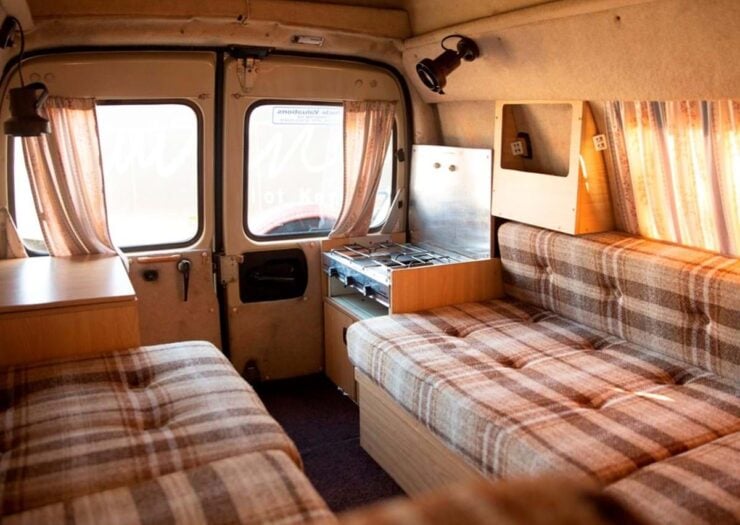

The less common and more upmarket versions of the Maestro, like the MG and Vanden Plas variants, have been increasing in desirability in recent years as they officially cross over into classic status. People are realizing there aren’t actually that many good rust-free examples left and this scarcity seems to be resulting in a climb in values.
The 1986 Austin Maestro Countryman Shown Here
The vehicle you see in this article is one of the rarest versions of the Maestro, it’s an original Austin Rover Maestro Countryman that turned the affordable commuter car into a compact camper van ideal for weekends away from home.
The addition of “Rover” to the name, compared to the standard Austin Maestro, is because British Leyland was restructured in 1986 and as a result of this, the production of the Maestro was done by Rover from this point forwards.
The rear end of the Countryman has been converted into a high-top van and inside you’ll find a couch on either side that doubles as a bed. There is also a small kitchenette which consists of a two burner gas stove and some cupboard space.
There is additional cupboard space on the other side, as well as built in lighting, curtains, and a central mounting point in the floor for a table – which would convert the two couches into a simple dinette set. The lack of a sink and a toilet means you would likely need to stay at established campsites or caravan parks to access their amenities, but if you don’t mind roughing it a little you could always head out further afield.
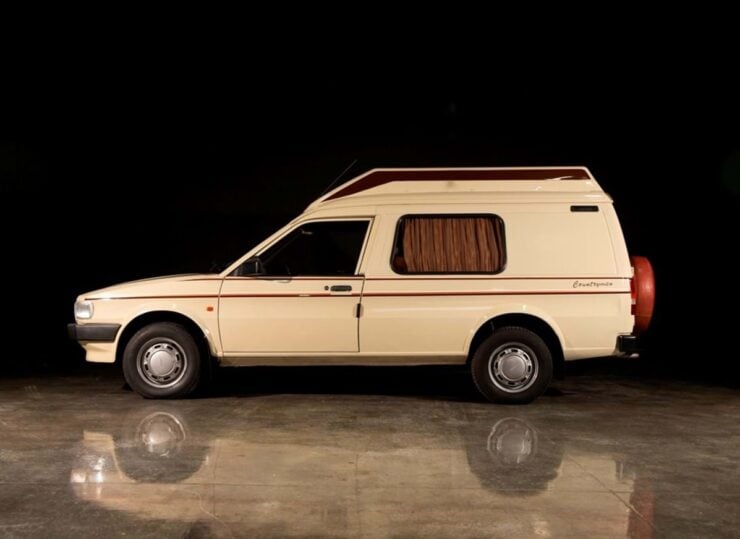

This is one of the only examples of the Maestro Countryman that we’ve seen come up for sale in recent years, and it’s in surprisingly original condition throughout with minimal signs of wear and tear.
It’s now due to roll across the auction block with Historics Auctioneers on the 11th of May with a price guide of £5,000 – £7,000 which works out to approximately $6,300 – $8,900 USD. If you’d like to read more about it or register to bid you can visit the listing here.
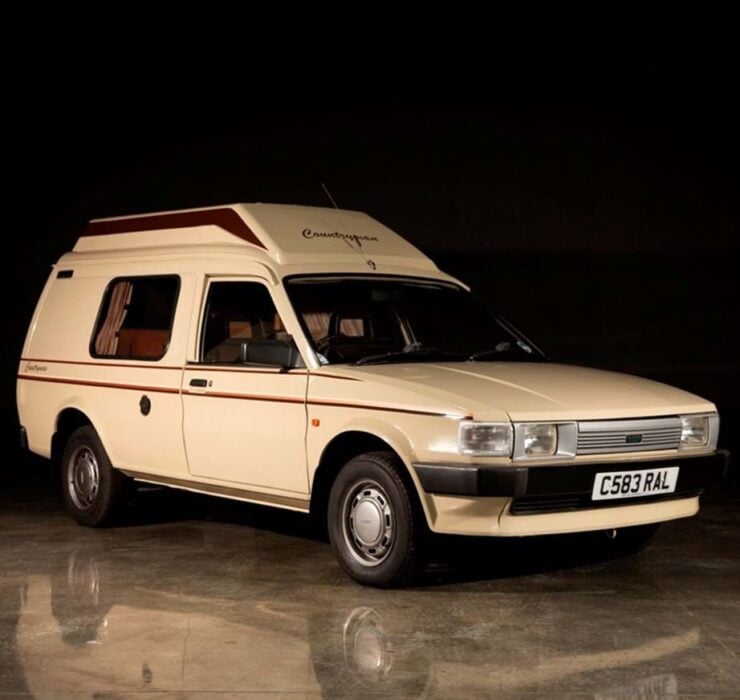
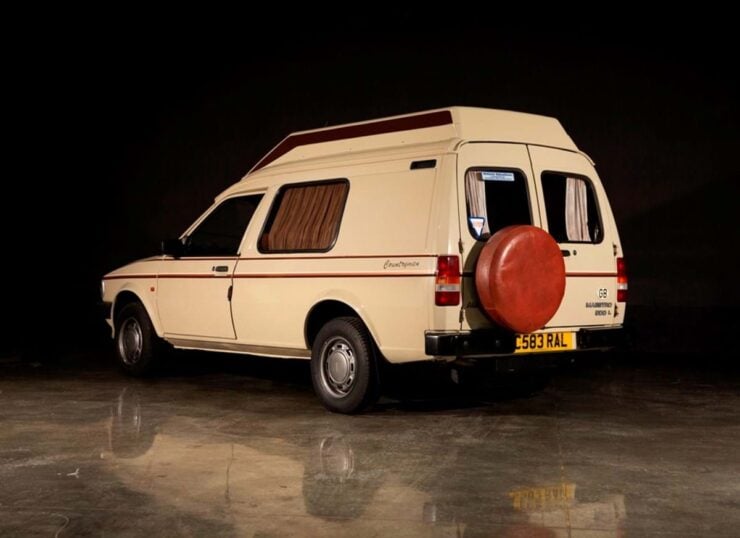
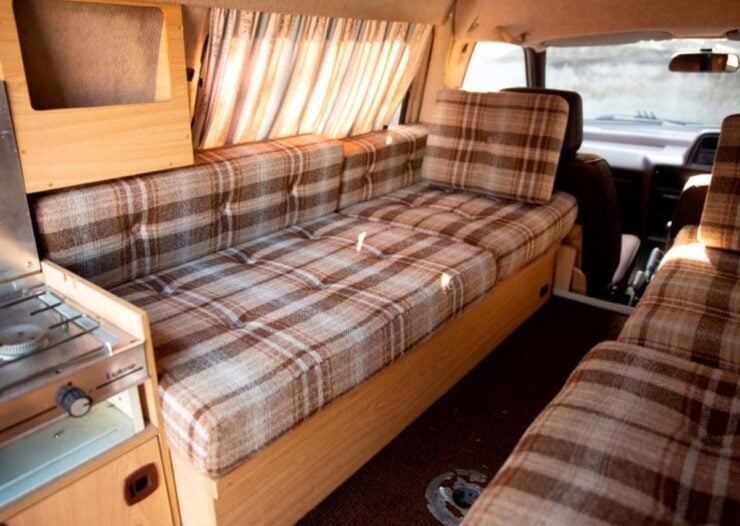
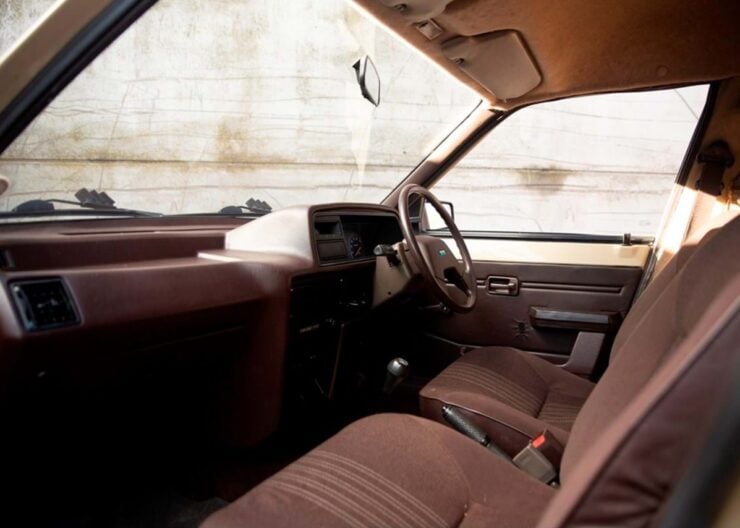
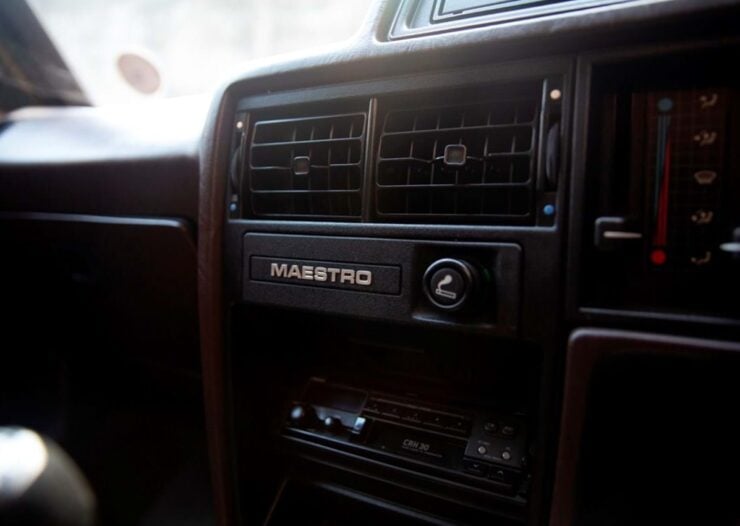
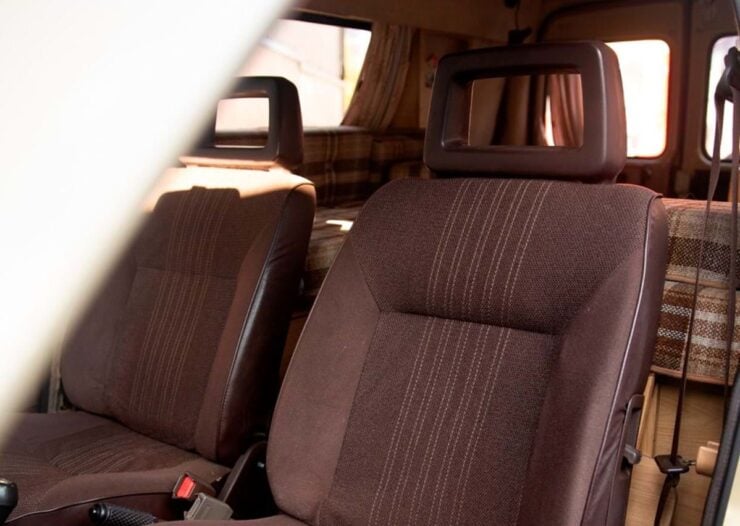
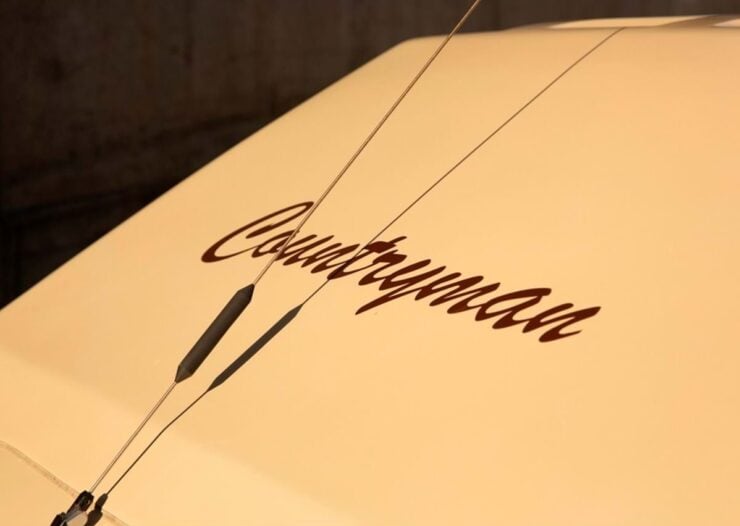
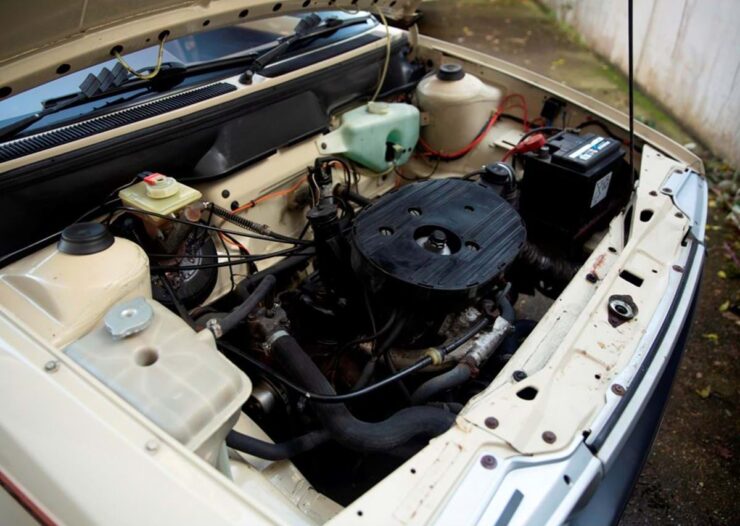
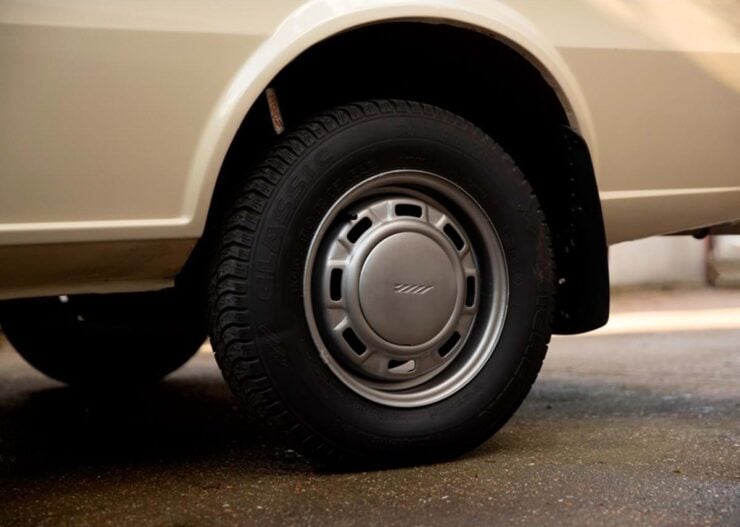
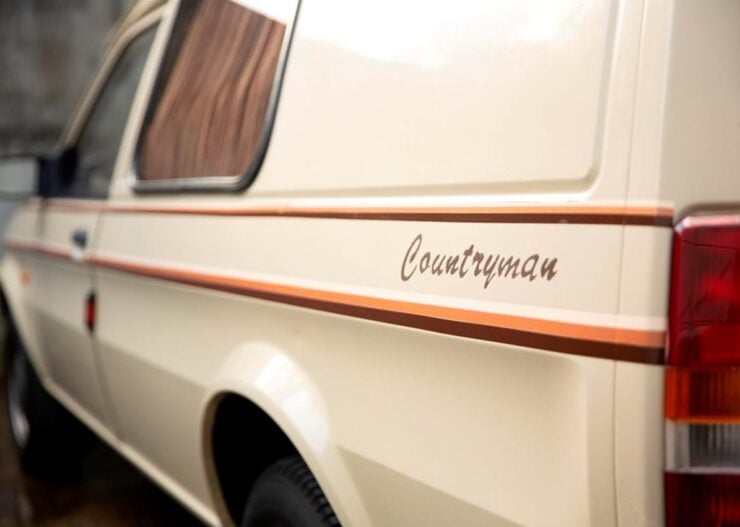
Images courtesy of Historics Auctioneers

